Related Research Articles

The National Autonomous University of Mexico is a public research university in Mexico. It ranks highly in world rankings based on the university's extensive research and innovation. It is the largest university in Latin America and has one of the biggest campuses in the world. UNAM's main campus in Mexico City, known as Ciudad Universitaria, is a UNESCO World Heritage site that was designed by some of Mexico's best-known architects of the 20th century and hosted the 1968 Summer Olympic Games. Murals in the main campus were painted by some of the most recognized artists in Mexican history, such as Diego Rivera and David Alfaro Siqueiros. With acceptance rates usually below 10%, UNAM is also known for its competitive admission process. UNAM generates a number of strong research publications and patents in diverse areas, such as robotics, computer science, mathematics, physics, history, philosophy, among others. All Mexican Nobel laureates are either alumni or faculty of UNAM.
Colegio Williams is a private school system in Mexico City, serving preschool through high school. It has three campuses: Campus Mixcoac in Mixcoac, Benito Juárez; Campus San Jerónimo in San Jerónimo Lídice, Magdalena Contreras, and Campus Ajusco in San Miguel Ajusco, Tlalpan. Its head office is in the Mixcoac campus.
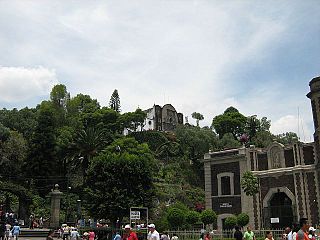
Tepeyac or the Hill of Tepeyac, historically known by the names Tepeyacac and Tepeaquilla, is located inside Gustavo A. Madero, the northernmost delegación or borough of Mexico City. According to the Catholic tradition, it is the site where Saint Juan Diego met the Virgin of Guadalupe in December 1531, and received the iconic image of the Lady of Guadalupe. The Basilica of Our Lady of Guadalupe located there is one of the most visited Catholic shrines in the world. Spanish colonists erected a Catholic chapel at the site, Our Lady of Guadalupe, "the place of many miracles." It forms part of the Sierra de Guadalupe mountain range.
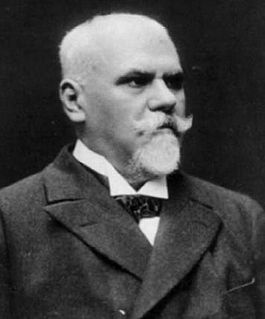
Justo Sierra Méndez, was a prominent liberal Mexican writer, historian, journalist, poet and political figure during the Porfiriato, in the second half of the nineteenth century and early twentieth century. He was a leading voice of the Científicos, "the scientists" who were the intellectual leaders during the regime of Porfirio Díaz.
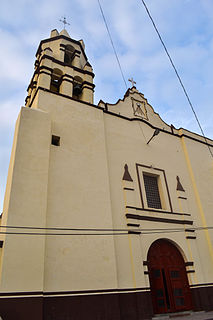
Ciudad Valles is the second-largest city in the Mexican state of San Luis Potosí. It is located in the eastern part of the state, in the cultural region of Huasteca. The city is also the municipal seat of the surrounding municipality of the same name. The city had a 2014 census population of 176,935.

Kinal is a major pre-Columbian Maya archaeological site in the Petén Department of the modern-day Petén Department of northern Guatemala. The major occupational phase for the site dates from the Late Classic period of Mesoamerican chronology, with evidence for a substantial and expansionary building program dating from the first half of the 8th century AD. Kinal was discovered in the 1960s by archaeologist Ian Graham while he was carrying out an archaeological survey of the region, although no excavations were undertaken at the site at that time.

Benquerencia de la Serena is a municipality in the province of Badajoz, Extremadura, Spain. According to the 2014 census, the municipality has a population of 904 inhabitants. It is located in La Serena comarca, in the area of the Sierra Morena, the local ranges being Sierra de Benquerencia, Sierra de los Tiros and Sierra de Almorchón.

Las Margaritas is a city, and the surrounding municipality of the same name, in the Mexican state of Chiapas. The municipal seat is located some 25 km to the northeast of Comitán de Domínguez, while the municipality extends to the east as far as the border with Guatemala. Part of the Lagunas de Montebello National Park is in the municipality's territory.
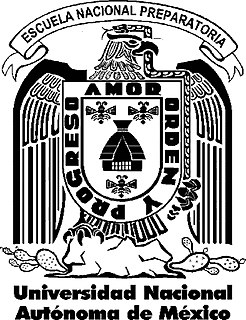
The Escuela Nacional Preparatoria (ENP), the oldest senior High School system in Mexico, belonging to the National Autonomous University of Mexico (UNAM), opened its doors on February 1, 1868. It was founded by Gabino Barreda, M.D., following orders of then President of Mexico Benito Juárez. It is also modern UNAM's oldest institution.
The United States Border Patrol operates 71 traffic checkpoints, including 33 permanent traffic checkpoints, near the Mexico–United States border. The stated primary purpose of these inspection stations is to deter illegal immigration and smuggling activities. After the September 11 attacks in 2001, they took on the additional role of terrorism deterrence. These checkpoints are located between 25 and 75 miles of the Mexico–United States border along major U.S. highways; near the southern border of the contiguous United States. Their situation at interior locations allow them to deter illegal activities that may have bypassed official border crossings along the frontier. The checkpoints are divided among nine Border Patrol sectors. There are a number of these checkpoints near the northern border of the contiguous U.S. as well, within 100 miles (160 km) of the Canada–U.S. border.

Colegio de San Ildefonso, currently is a museum and cultural center in Mexico City, considered to be the birthplace of the Mexican muralism movement. San Ildefonso began as a prestigious Jesuit boarding school, and after the Reform War it gained educational prestige again as National Preparatory School. This school and the building closed completely in 1978, then reopened as a museum and cultural center in 1992. The museum has permanent and temporary art and archeological exhibitions in addition to the many murals painted on its walls by José Clemente Orozco, Fernando Leal, Diego Rivera and others. The complex is located between San Ildefonso Street and Justo Sierra Street in the historic center of Mexico City.

The house of the Counts of la Torre Cosío y la Cortina, located on 94 Republica de Uruguay Street in the historic center of Mexico City was built in 1781 and the scene for one of Mexico City's legends. The house is considered to be a fine example of civil architecture of the 18th century, shortly after the First Count De la Cortina received his noble title in 1773. The most notable member of this family would be Justo Gómez de la Cortina who was an important social and political figure in New Spain at the beginning of the 19th century.
Colonia Santa María Insurgentes is a colonia in the Cuauhtémoc borough north east of the Mexico City’s historic center. The colonia’s borders are formed by the following roads: Calzada de San Simon to the south, Jacarandas to the north, Avenida de los Insurgentes Norte to the east and Jacarandas to the west.
The Sierra Mazateca is a mountainous area, part of the Sierra Madre de Oaxaca mountain range, located in the northern part of the state of Oaxaca in Southern Mexico. It is named after the Mazatec people, who are indigenous to the area.

The Colegio Franco Español is a private school in the San Lorenzo Huipulco colonia in Tlalpan, Mexico City. It covers preschool through high school (preparatoria) levels.

XEUN-AM is a radio station in Mexico City. Broadcasting on 860 AM, XEUN-AM is owned by the National Autonomous University of Mexico (UNAM) as a sister to XEUN-FM 96.1 and XHUNAM-TDT 20.
Sistema Educativo Justo Sierra is a private school and university system in the Mexico City metropolitan area. Universidad Justo Sierra is a part of the system.
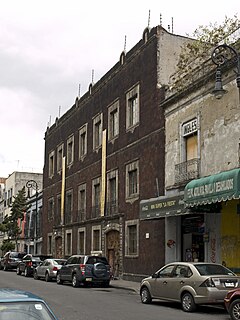
The Historic Synagogue Justo Sierra 71 or Synaguoge Nidjei Israel is an old Ashkenazi synagogue in Mexico City. The building serves both as a synagogue and cultural center of the Jewish community in the historic center of Mexico City. It was constructed in 1941.

The Iglesia de los Santos Justo y Pastor, popularly known as Iglesia de San Justo, is a church located in the city of Toledo. It was founded after the city was taken by King Alfonso VI of León and Castile in the 13th century. The city underwent transformations between the 14th and 18th centuries. This is a religious temple under the invocation of the holy children Justus and Pastor.
References
- ↑ "Justo Sierra" (in Spanish). Justo-sierra.edu.mx. Retrieved 2013-08-15.
Coordinates: 18°54′.18″N99°10′30.48″W / 18.9000500°N 99.1751333°W